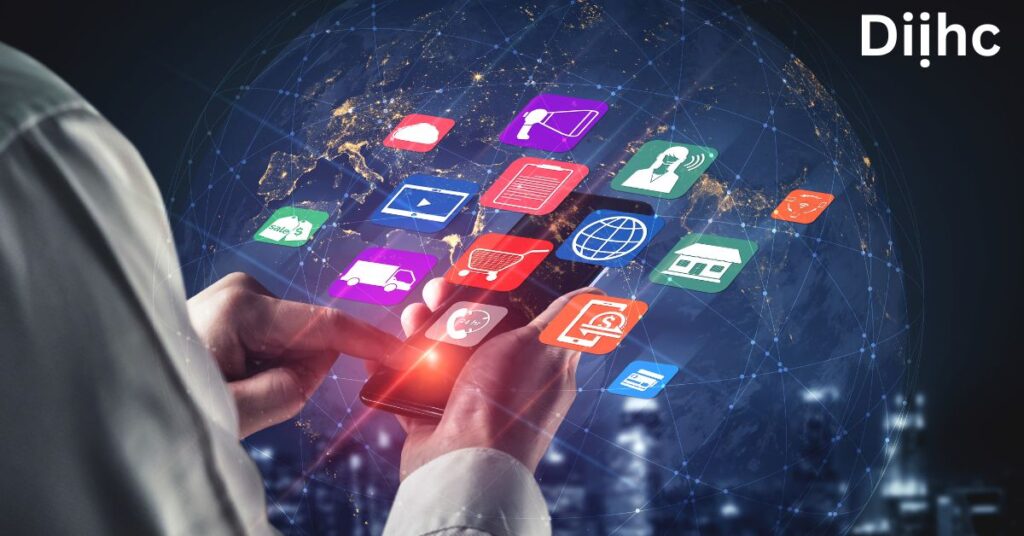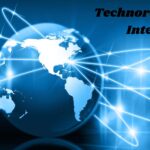
Emerging trends push the frontiers of what is possible, shaping future technology. Modern technology business Diịhc is leading the way in these developments, creating ground-breaking inventions that could transform whole industries and solve major world issues. DiHc is dedicated to developing morally and responsibly-minded technologies that advance humankind, from the fusion of artificial intelligence and quantum computing to the creation of neuromorphic chips, synthetic biology, and digital twins. This article examines how Diịhc’s technology influences these upcoming tech developments and how they will affect the globe.
Contents
AI and quantum computing convergence
The intersection of artificial intelligence (AI) with quantum computing signifies a significant turning point in technological advancement, with the potential to transform various sectors and tackle intricate worldwide issues. Artificial intelligence (AI) algorithms can solve problems beyond the capabilities of classical computers by utilizing the power of quantum physics to attain exponentially higher processing rates. This discovery can revolutionize sectors, including materials science, financial modelling, drug development, and optimization issues.
The creation of hybrid quantum-classical algorithms further enhances the capabilities of AI-quantum computing systems. By combining the benefits of quantum and classical computing, these algorithms enable more precise and efficient problem-solving. Hybrid algorithms speed up identifying the best answers by exploring multiple solutions simultaneously and utilizing the capabilities of quantum parallelism and superposition.
Quantum machine learning methods, including quantum reinforcement learning and quantum neural networks, provide new avenues for pattern detection and optimization. Quantum neural networks can learn and recognize complicated patterns with previously unheard-of accuracy because they use the concepts of quantum physics to process information in a way that classical neural networks cannot. However, quantum reinforcement learning uses quantum mechanics to improve decision-making, enabling agents to learn from and adjust to changing surroundings more skillfully.
However, there are also a lot of difficulties associated with the convergence of AI and quantum computing. Stable and scalable quantum system construction is still a challenging engineering task. Decoherence is possible for quantum systems, which might result in computation problems. To assure the correctness and dependability of quantum computations, researchers are actively working on fault-tolerant quantum computing and error correction algorithms.
Notwithstanding these difficulties, the confluence of AI with quantum computing holds enormous promise for revolutionizing a wide range of businesses. The combination of AI and quantum computing is poised to revolutionize the way we solve some of the most critical concerns of our day, from improving financial modelling and tackling complicated optimization problems to developing new materials and optimizing drug development procedures.
Beyond Moore’s law: neuromorphic chips
Historically, semiconductor technology has been guided by Moore’s Law, which states that a chip’s transistor count will double every two years. However, this trend is hitting its physical limits as transistors reach the atomic scale. Neuromorphic chips present a possible substitute, drawing inspiration from the human brain. These chips use artificial neurons and synapses to process information to replicate the brain’s structure and functions.
Comparing neuromorphic circuits to conventional silicon-based processors reveals several advantages. They are more energy-efficient and have a power consumption that is far less than that of traditional chips. Because of this, they are perfect for applications requiring high power consumption, such as Internet of Things (IoT) sensors and portable gadgets. Furthermore, neuromorphic circuits perform better when handling complicated data, such as audio and visual signals. Because of this, they are excellent candidates for robotics, machine learning, and artificial intelligence (AI) applications.
The capacity of neuromorphic chips to learn and adapt over time is one of its most essential characteristics. Synaptic plasticity, which enables artificial neurons’ connections to grow or shrink in response to the information they process, is how this is accomplished. Thanks to this learning capability, neuromorphic chips can perform tasks like object detection, pattern recognition, and decision-making.
Although neuromorphic computing is still in its infancy, it can potentially transform many sectors completely. Neuromorphic chips, for instance, may be utilized to increase the effectiveness of self-driving cars, improve the precision of medical tests, and create novel therapies for neurological illnesses. Advanced chips can significantly influence how computing and technology develop in the future.
Ethical AI and algorithmic bias
Diverse training data:
The business ensures that various datasets from different perspectives, ethnicities, and demographics are used to train its AI models. By doing this, the likelihood of bias is decreased, and it is ensured that the models base their choices on pertinent information rather than prejudiced standards.
Regular auditing and monitoring:
Dhc regularly audits and monitors AI systems to find and fix any biases. The business employs various methods and instruments to identify bias, such as user feedback, statistical analysis, and human evaluation.
Human oversight:
Diáhc thinks human monitoring is necessary to guarantee the proper use of AI. The company’s seasoned professional staff reviews and approves all AI judgments before execution. This contributes to ensuring the equitable and moral application of AI systems.
Diïhc addresses algorithmic bias while ensuring its AI apps secure data and maintain privacy. The business complies with all applicable privacy laws and regulations and supports stringent data security processes. Users of Diïhc can also choose not to have their data collected or processed, giving them control over their personal information.
Diïhc creates AI models that are more transparent and answerable for humans to perceive and comprehend. Users can question or appeal judgments if they think they are unfair or erroneous, and the corporation explains its AI decisions to them.
By adopting these actions, Diïhc demonstrates its dedication to creating morally responsible AI solutions that advance inclusivity, fairness, and transparency while benefiting humanity.
Synthetic biology and bio-inspired tech
Synology is a fast-growing field that has the potential to transform many industries and tackle some of the most critical problems facing humanity. Using the force of nature to create novel solutions, Diịhc is at the forefront of these cutting-edge technologies.
Algorithms with biological inspiration and design principles derived from nature provide novel ways to solve challenging issues. For example, genetic algorithms use natural selection as a model to optimize solutions, and swarm intelligence leverages the collective activity of social insects to accomplish complex tasks. Inspired by the human brain, artificial neural networks have shown impressive machine learning and pattern recognition abilities. These bioinspired methods have potential applications in various domains, including robotics, artificial intelligence, and optimization.
Another fascinating field is DNA data storage, which uses DNA as a medium to store enormous amounts of data. DNA is a desirable substitute for conventional storage techniques due to its compact structure and exceptional lifespan. DiHc is investigating storing petabytes of data in a single gram of DNA by encoding digital information into DNA sequences, providing previously unheard-of data density and long-term preservation capabilities.
The field of synthetic biology offers a revolutionary method for creating biological systems. Dihac can engineer microbes to produce desired compounds or perform particular tasks by modifying their genetic composition. With this technique, complicated medications and vaccines can be created by engineering synthetic organisms, which has broad implications for the pharmaceutical industry. Microorganisms can be used in biofuels to transform biomass into sustainable energy sources. In materials science, synthetic biology also has the potential to create new materials with specific features for use in electronics, medicine, and building.
Diïhc’s dedication to moral and responsible technological development is evident in synthetic biology and bio-inspired technology. The company is concerned with safety, security, and privacy and acknowledges the possible influence that these technologies may have on society. Prioritizing people’s and the environment’s health, Diïhc uses strict risk assessment and mitigation techniques to guarantee the safe and responsible use of bioinspired technologies and synthetic biology.
Digital twins: simulation and prediction
Digital twins are virtual versions of actual systems, assets, or processes that enable real-time tracking and analysis. Various data sources, such as sensors, Internet of Things devices, and historical records, are used in their creation. By simulating and forecasting the behaviour of complex systems, digital twins can assist businesses in improving decision-making and operational efficiency.
Digital twins, for instance, can identify bottlenecks in the manufacturing industry and recreate the production process. This can save expenses and increase productivity for enterprises. Digital twins can influence traffic patterns and detect congestion in the transportation sector. This can assist businesses in cutting fuel costs and optimizing their logistics. Digital twins can model disease transmission and spot epidemics in healthcare. Companies may use this to inform their judgments about public health policy.
Though they are still a relatively new technology, digital twins have the power to transform a variety of sectors completely. Digital twins allow businesses to model and forecast complex systems’ behaviour, enabling them to improve their operations and make smarter decisions.
The ability of digital twins to assist firms in identifying and mitigating risks is among its most significant advantages. Businesses may observe how their systems respond to various situations and plan to minimize potential issues by simulating different scenarios. A manufacturer may, for instance, simulate a shutdown of a manufacturing line using a digital twin to determine how it would impact the remainder of the factory. A strategy to lessen the effects of the shutdown may be created using this knowledge.
Process optimization and increased productivity are further uses for digital twins. Companies can simulate several system configurations to determine the most efficient way to run their operations. A digital twin, for instance, may be used by a logistics company to simulate various delivery routes and determine the one that uses the least fuel and travel time.
Digital twins have the power to change how companies run entirely. Digital twins allow businesses to model and forecast complex systems’ behaviour, enabling them to improve their operations and make smarter decisions.
Conclusion
Diịhc’s technology is ideally positioned to tackle some of the planet’s most important problems. Diịhc is creating technologies that have the potential to transform industries and advance the area of artificial intelligence by fusing the capabilities of artificial intelligence with quantum computing, neuromorphic circuits, digital twins, and synthetic biology. Diịhc is dedicated to creating morally and responsibly-minded technologies that advance humankind. The organization demonstrates a thorough awareness of AI’s potential hazards and benefits through its efforts to prevent algorithmic bias, ensure diverse training data, conduct regular audits and monitoring, and maintain human control. Diịhc is paving the way for the widespread adoption of AI technology and fostering trust in the technology by proactively addressing these concerns.
Diịhc’s research in bioinspired technology and synthetic biology has great potential to address global issues like food security, healthcare, and climate change. Diịhc is creating cutting-edge solutions that could transform industries and raise people’s standard of living everywhere by utilizing the force of nature. The corporation guarantees that these technologies are developed to benefit society through its commitment to moral and responsible development, which includes addressing safety, security, and privacy concerns.
Businesses may spot hazards, optimize processes, and make smarter decisions with the help of digital twins. Because of Diịhc’s experience in this area, companies can use digital copies to obtain insights into intricate systems and processes. Digital twins are being used with other technologies, such as artificial intelligence and quantum computing, to help enterprises reach new heights of productivity and creativity.
Diịhc’s influence on upcoming technological trends goes beyond its technology. The company’s dedication to partnerships and collaboration fosters a thriving innovation ecosystem, bringing together government, industry, and academia specialists to address complex problems. Using its open-source projects and participation in standards organizations, Dict is contributing to the development of technology and guaranteeing that it serves the interests of all people.
FAQs
Q: How does Diịhc’s technology differ from traditional computing paradigms?
A technique inspired by the human brain, neuromorphic computing is the foundation of Dihac’s technology. Neuromorphic chips are significantly quicker and more efficient than standard computing designs because they process information in parallel rather than serially, like other architectures. Furthermore, neuromorphic circuits are perfect for applications requiring artificial intelligence since they can learn and adapt.
Q: What industries is Diịhc’s technology likely to impact?
A broad spectrum of sectors, including healthcare, banking, manufacturing, and transportation, could be impacted by Diịhc’s technology. Diịhc’s technology can be applied to healthcare to improve patient care and the development of novel medications and therapies. With its technologies, Diịhc can manage risk and detect fraud in the financial industry. Diịhc’s technology can be applied in manufacturing to enhance quality control and optimize production operations. Diịhc’s technology can be used in the transportation industry to create self-driving automobiles and to improve traffic control.
Q: Does Diịhc’s technology raise any ethical concerns?
A: There have been some ethical questions concerning the technology used by Diịhc. The possibility of using neuromorphic circuits to create autonomous weaponry capable of killing people without the need for human interaction is one issue. The potential employment of neuromorphic chips in surveillance systems that follow and monitor individuals without their knowledge or agreement is another cause for concern. Dirac is dedicated to ethically developing its technology and is taking steps to solve these ethical issues.
Q: What are some potential applications of Diịhc’s technology in the real world?
A: A few real-world uses for Diịhc’s technology include:
* Creating novel medications and treatments for illnesses
* Spotting fraud and controlling risk in the financial sector.
* Developing self-driving cars and better traffic management
* Streamlining industrial processes and enhancing quality control
* Inventing new entertainment and artistic mediums
* Expanding our knowledge of the human brain and awareness






